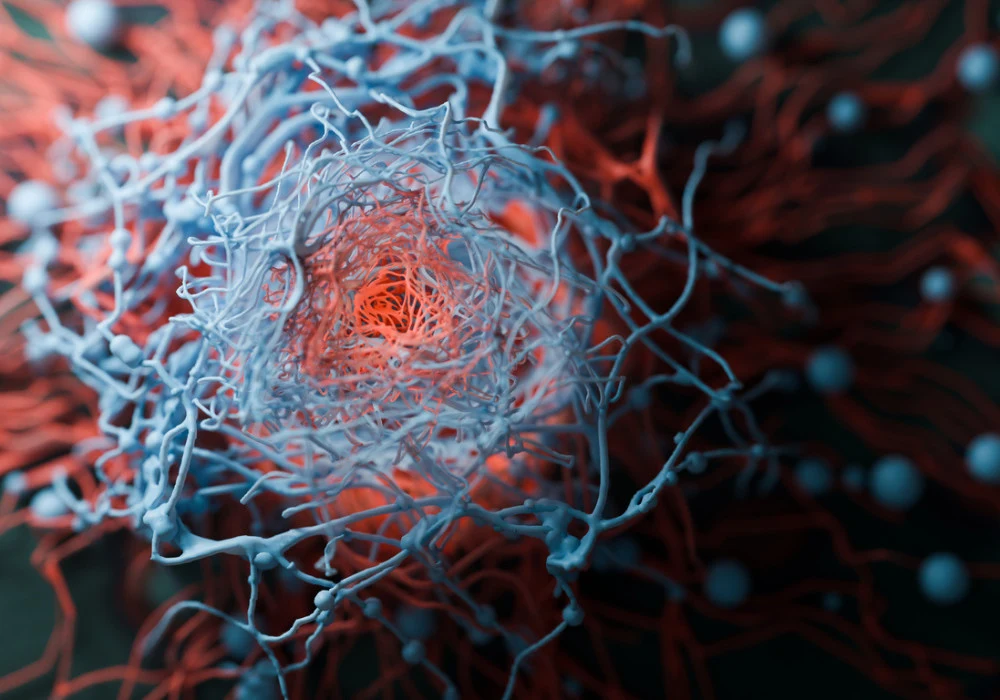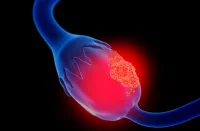Lung cancer remains the leading cause of cancer-related deaths worldwide, with invasive non-mucinous adenocarcinoma (INMA) being the most prevalent subtype. This histological variant of lung adenocarcinoma carries a poor prognosis, necessitating accurate tumour grading for effective clinical management. In 2020, the International Association for the Study of Lung Cancer (IASLC) introduced a revised histological grading system for INMA, significantly enhancing the accuracy of prognostic assessments by incorporating both predominant and high-grade histological patterns.
The IASLC grading system provides a more detailed classification framework for INMA, dividing tumours into three grades based on the proportion of high-grade histological components, such as solid and micropapillary patterns. Accurate identification of tumour grade is essential for guiding treatment strategies, including the extent of surgical resection and the need for adjuvant therapies. Non-invasive imaging techniques such as computed tomography (CT), positron emission tomography combined with CT (PET/CT) and magnetic resonance imaging (MRI) have shown increasing potential for predicting lung INMA grading. These techniques can offer reliable diagnostic insights without invasive biopsies, improving early detection and personalising treatment plans.
The IASLC Grading System and Its Prognostic Importance
The IASLC grading system was developed to address the limitations of previous tumour classification models, which focused solely on the predominant histological growth pattern. This older approach often fails to capture the influence of minor high-grade components, which can significantly affect a patient's prognosis. The IASLC system, by contrast, evaluates both the dominant growth pattern and the presence of high-grade features.
Lung INMA is now categorised into three grades: Grade 1 tumours are well-differentiated, with less than 20% high-grade components; Grade 2 tumours are moderately differentiated, also with less than 20% high-grade features; and Grade 3 tumours are poorly differentiated, with 20% or more high-grade elements. This refined classification allows for better risk stratification, guiding clinical decisions more effectively.
The prognostic significance of the IASLC system has been demonstrated in several studies. Higher grades correlate with poorer survival outcomes, including reduced recurrence-free survival and overall survival rates. Identifying the tumour grade accurately is crucial, as it directly influences treatment strategies. For example, patients with Grade 3 tumours often require more extensive surgical resections and systematic lymph node dissections; they also may benefit from adjuvant chemotherapy. This enhanced stratification has also facilitated better patient counselling regarding expected outcomes.
The Role of Non-Invasive Imaging in Tumour Prediction
Non-invasive imaging has become a vital tool in preoperative tumour grading, offering valuable insights into tumour characteristics without the need for tissue extraction. Various imaging modalities, including CT, PET/CT and MRI, have been increasingly employed to predict INMA grades under the IASLC system.
CT imaging remains one of the most widely used methods due to its accessibility and high-resolution capabilities. Features such as the consolidation tumour ratio (CTR), air bronchograms and tumour margin definitions have shown promise in distinguishing between tumour grades. Higher CTR values and larger solid components are often associated with Grade 3 tumours, indicating a higher likelihood of aggressive disease.
PET/CT combines metabolic imaging with anatomical assessment, using fluorodeoxyglucose (FDG) uptake as a marker of tumour activity. Higher standardised uptake values (SUVmax) have been correlated with high-grade INMA, reflecting increased glucose metabolism in more aggressive tumours. MRI, while less commonly used in lung cancer diagnosis, has demonstrated potential in grading lung INMA through diffusion-weighted imaging (DWI) and the apparent diffusion coefficient (ADC), which measure cellular density and diffusion within tissues.
These non-invasive methods offer promising alternatives to traditional histological examination, which relies on tissue samples obtained through invasive biopsy or surgical resection. However, limitations remain, including variability in imaging interpretation and the need for standardised protocols to ensure consistent results across clinical settings.
Radiomics and Deep Learning: Enhancing Imaging Accuracy
Recent advancements in radiomics and deep learning have further enhanced the predictive capabilities of non-invasive imaging techniques. Radiomics involves the extraction of large datasets of quantitative features from medical images, revealing patterns and tumour characteristics often imperceptible to the human eye. By combining these data-driven insights with traditional imaging methods, radiomics has significantly improved the accuracy of lung cancer grading predictions.
Deep learning, a subset of artificial intelligence (AI), has also emerged as a powerful tool in medical imaging analysis. Convolutional neural networks (CNNs) can autonomously extract complex imaging features, enabling higher accuracy in tumour grading prediction compared to conventional methods. Studies have demonstrated the superior performance of deep learning models in identifying high-grade lung INMA, with some models achieving greater diagnostic accuracy than experienced radiologists.
However, despite these advancements, challenges persist. Radiomics and deep learning models require large, diverse datasets to ensure generalisability across different patient populations. Additionally, the interpretability of deep learning algorithms remains a concern, as their decision-making processes are often opaque. Further research and validation in multi-centre trials are needed to ensure the clinical reliability of these technologies.
The combination of the IASLC grading system with non-invasive imaging technologies has significantly improved the accuracy of lung INMA prognosis and treatment planning. Techniques such as CT, PET/CT and MRI, when enhanced by radiomics and deep learning, offer powerful tools for non-invasive tumour grading, reducing the need for invasive diagnostic procedures.
While challenges remain, including the need for standardised imaging protocols and broader data sets for AI models, the continued development of non-invasive imaging holds substantial promise for the early and precise management of lung INMA. By refining tumour classification accuracy and aiding in treatment personalisation, these advancements can lead to improved patient outcomes and more effective clinical decision-making.
Source: Insights into Imaging
Image Credit: iStock










